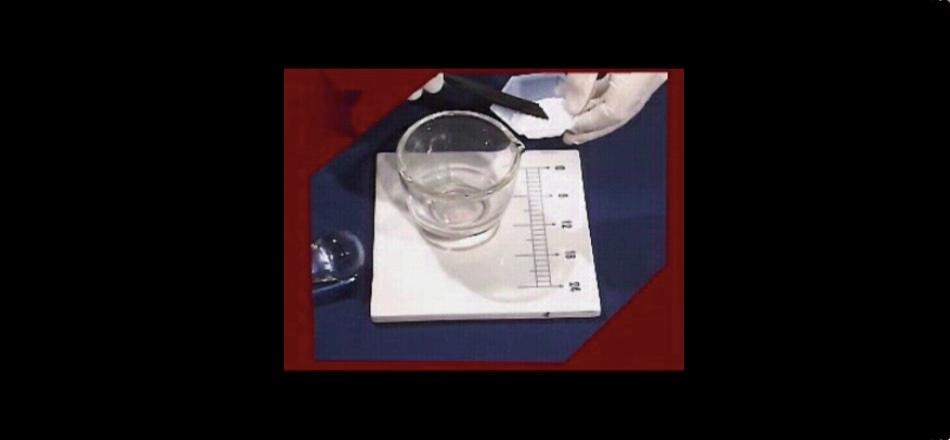Diluting Powder When Using a Digital Scale

A Precautionary Preface: The accuracy of digital scales and why diluting powder may sometimes be important
As described elsewhere in Step 18—Essential Skills, many people in the lay withdrawal community use digital scales to weigh powder from a poured-out capsule or crushed tablet and make cuts in accordance with their chosen taper plans. However, under certain circumstances some risks can arise with this approach. Many low-cost digital scales display differences in weight as small as 0.001g or 1mg, but even when the scale is operating optimally, the final digit on the display is being rounded up or down. Therefore, when the display reads for example 2.135g, the actual weight on the scale could be as high as 2.1354g or as low as 2.1345g. (This is an example only—If using this method, always check a scale’s technical guide to be sure of its specific accuracy ratings, and calibrate the scale regularly.) During a taper process this potential, unknown difference in drug quantity can become significant, particularly as the sizes of cuts and weight of the drug become smaller.
A method of compensating for this problem is to increase the overall weight of the drug by adding pharmaceutical-grade powder filler to it, to ensure that the amount being cut can then be reliably measured by the scale, and that the amount of weight that is being rounded up or down is no longer significant relative to the actual dose of drug being taken or cut. Compounding pharmacies commonly dilute drug powders using powder fillers and so, though it is not currently common practice in the layperson withdrawal community, we include description of a drug dilution process below for those who may be interested in learning about it.
1. Start with a drug that is in powdered form, such as a poured-out powdered capsule or crushed tablet. If it is a tablet that was crushed, ensure that all of the particles have been crushed into a very fine powder, and that there are no chunks or clumps remaining. (Depending on various factors such as weight of drug, size of cut desired, storage possibilities, etc., it may be preferable to work with more than one crushed tablet at a time.) Be sure to have a pharmaceutical-grade powder filler ready to hand.
2. Place the powdered drug onto the scale and weigh it. (Click here for information on using a digital scale.)
3. Transfer the powdered drug to a glass or stainless steel bowl or other non-sticky, non-absorbent container that will allow for mixing.
4. Decide on the total amount of weight being aimed for, and calculate how much of the pharmaceutical-grade powder filler must be added to the drug weight to achieve that total weight. (If unsure, refer to "Doing Calculations for a Taper". The total weight is defined in the formulas there as the “Total Starting Amount”.)
5. Measure out the desired amount of powder filler on the scale, and then place it in a separate container.
6. Now, slowly transfer a small amount of the powder filler into the container holding the drug powder, and mix thoroughly using a mixing tool such as a flat metal spatula.
7. Slowly transfer another small amount of the powder filler into the container holding the drug powder, and again mix thoroughly. Repeat this process until all of the measured powder filler has been thoroughly mixed with all of the drug powder. (For a demonstration, see this video.)
8. Weigh the combined drug powder and powder filler to be certain the desired total weight has been achieved. This is now the powdered dilution.
9. Remove the calculated amount of weight from the powdered dilution that corresponds to the calculated amount of cut desired.
The powdered dilution may then be mixed with water and consumed, or measured and transferred to one or more capsules for consumption. If intending to store any of the dilution, be sure to consult the FDA-approved drug label for general information about storing the drug and confer with a well-informed pharmacist about safe storage. The United States Pharmacopeial Convention (USP) also provides tips and guidelines for the safe storage of different types of altered, nonsterile drug preparations.
In this section
- Step 10- Get Informed About Your Psychiatric Drug
- Step 11- Ensuring that a Drug is Relatively ‘Taper-friendly’
- Step 12- Interactions, Reactions and Sensitivities
- Step 13- Taper Rates
- Step 14- Taper Schedules
- Step 15- Taper Methods
- Step 16- Preparatory Decisions
- Step 17- Gather the Gear
-
Step 18- Essential Skills
- Counting and Making Cuts with Beads
- Diluting Powder When Using a Digital Scale
- Understanding the Limits of a Digital Scale's Accuracy
- Using an Adapter Cap
- Using a Digital Scale for Weighing and Making Cuts
- Using a Mortar and Pestle for Pulverizing Tablets
- Using Syringes
- Doing Calculations for a Taper
- Special Tips for Calculations and Liquids
- Step 19- Setting Up a Taper Journal
- Step 20- Implementing a Taper
TWP’s Companion Guide to Psychiatric Drug Withdrawal Part 2: Taper